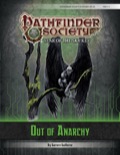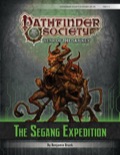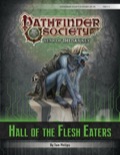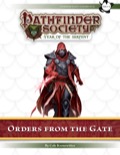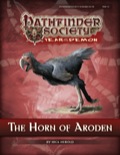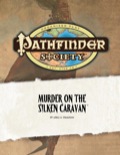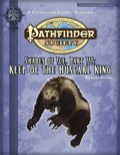Sign in to create or edit a product review. The Good:
The Bad:
Pros:
Cons:
Pros:
Combat was very easy and more designed for atmosphere and immersion than a challenge. Some people may see that as a Con, but for me keeping the combat light and keeping the story moving really helped the players enjoy the scenario and it's noncombat aspects. Despite the name of the scenario, there are a variety of ways to go about it. Diplomacy can take you far here, and my players particularly enjoyed that aspect of the scenario. Interesting things await in the Hall. No spoilers but your pathfinders will not be bored. Combat are perhaps a bit too easy but I'll take a relaxing scenario to a grueling dungeon crawl any day. 5 stars for story, 2 stars for execution A great glimpse into the Hellknights, and an exciting and atmospheric romp. The author did a very good job of guiding GM's into giving the players an immersive interaction with Hellknights, and even getting to understand them. That being said, there were a number of detail problems that should have been smoothed out before the scenario was released. Please don't take my criticism to mean that I didn't like the scenario: *********SPOILERS BELOW***************
- In the first and second combats, the hellknights deal with hordes of enemies while the PC's are asked to deal with their own combat. However what inevitably happens (particularly in the first combat where there was a 1-round delay before the actual bad guys show up) is that the PC's perform actions against the "flavor" enemies and the GM is forced to make stuff up in response. This could be tightened up. - In the second combat, there is only a very rough description of the situation and the GM is forced to guess where the PC's are supposed to be when combat begins. It should be more explicit. - In the 3a combat (With That Which Peels Flesh), The hellknights help the PC's in an abstract way. However two problems arose. a) First, the Hellknights can cast Shield Other to protect the PC's. However that makes it very easy for them to fail the secondary success condition of keeping all the hellknights alive. You shouldn't encourage the PC's to use a tool and then punish them for doing so. In fact when I ran it that is exactly what caused them to fail the success condition (although I fudged it and said the hellknight was just unconscious). b) Second, every time a Hellknight helps the PC's, there is a x% chance that they straight up die as an orc kills them. There are two problems with this. The first problem is that the scenario describes all the orcs getting held back by the other hellknights, and yet somehow an orc appears and kills the hellknight that is with the party. For the GM to describe this it's instantly going to confuse the players. The second and bigger problem is that you are taking the PC's ability to control the secondary success condition and turning it into a completely random dice roll that has nothing to do with the players or their choices. As a player had I known about that I would have been extremely frustrated. And again, you are punishing players for using a feature that you encourage them to use. -Finally, in the 3b combat (Temple of the Sky), there is a whole ton of description about what the PC's can do to activate the temple guardians...and then it's described that they activate on their own anyway no matter what you do. I think some proofreading would have revealed that this section of the pdf could have been tightened up a lot, as there is a ton of description of many different things and overall it could have been explained in a much shorter and concise manner that would be very helpful to GM's. I GM'd this scenario after having played it. ****SPOILERS BELOW*****
PROS:
CONS:
- Then on the other range of the spectrum, the combats that Lander forces the party into if they fail their diplomacy checks are so stupidly easy that there is no point in actually running them. Carbuncles? Pixies? Kobolds? Nothing more than a waste of time having to set up pointless combats. I hand-waived them and just described to the players what happened as they fought. Pros:
Cons:
The Good:
The Bad:
A strong roleplaying scenario combined with a bit of whodunit mystery. The diplomacy mechanics are complicated and require strong preparation to run smoothly and correctly. When I played it, our GM did it wrong and it was a disaster. But when I GM'd it, having ready very carefully the mechanics, the roleplay went swimmingly and my table had a great time. Despite being a RP scenario, the combat's are not weak at all. There are some nasty things going on in the fights. In fact I had to pull some punches to not kill the entire table for the last combat. So this scenario has got it all. I only dock 1 star because the scenario document could have done with better proofreading. |




